INTELLECTUAL PROPERTY DIVISION: DELHI HIGH COURT NOTIFIES NOMENCLATURES AND COURT FEES.
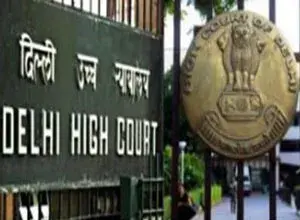 The Hon’ble Delhi High Court on the recommendation of a specially constituted committee had issued a press release on July 06, 2021 wherein the directive for creation of an Intellectual Property Division (IPD) of the Court was announced, inter alia to avoid multiplicity of proceedings and conflicting decisions in the fields of intellectual property.
The Hon’ble Delhi High Court on the recommendation of a specially constituted committee had issued a press release on July 06, 2021 wherein the directive for creation of an Intellectual Property Division (IPD) of the Court was announced, inter alia to avoid multiplicity of proceedings and conflicting decisions in the fields of intellectual property.
COVID-19 AND THE MARKS IT HAS LEFT.
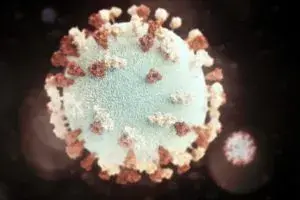 The COVID-19 pandemic has wreaked havoc globally and has deeply penetrated in all our lives, thereby compelling us to bring about a paradigm shift in the way we think, interact, perceive, work and live our daily lives.
The COVID-19 pandemic has wreaked havoc globally and has deeply penetrated in all our lives, thereby compelling us to bring about a paradigm shift in the way we think, interact, perceive, work and live our daily lives.
PIZZA WITH A SIDE OF DATA THEFT.
 In this digital day and age, data and information may be considered as the newest form of wealth. Perhaps that is why there isn’t a shortage of criminal activity surrounding data theft and infringement of one’s privacy!
In this digital day and age, data and information may be considered as the newest form of wealth. Perhaps that is why there isn’t a shortage of criminal activity surrounding data theft and infringement of one’s privacy!
MASIMO ACCUSES APPLE WATCH OF PATENT INFRINGEMENT
 Masimo, a California-based medical technology company, has recently filed a complaint before the United States International Trade Commission, inter alia stating that the Apple Watch Series 6 uses medical technology that infringes five of its patents.
Masimo, a California-based medical technology company, has recently filed a complaint before the United States International Trade Commission, inter alia stating that the Apple Watch Series 6 uses medical technology that infringes five of its patents.
INTELLECTUAL PROPERTY DIVISION: DELHI HIGH COURT NOTIFIES NOMENCLATURES AND COURT FEES.

By Lucy Rana and Tanvi Bhatnagar
The Hon’ble Delhi High Court on the recommendation of a specially constituted committee had issued a press release on July 06, 2021 wherein the directive for creation of an Intellectual Property Division (IPD) of the Court was announced, inter alia to avoid multiplicity of proceedings and conflicting decisions in the fields of intellectual property. Read more regarding the formation of the IPD.
Pertinently, the said press release also provided for the following:
- That the Hon’ble Delhi High Court is in the process of framing comprehensive Rules for the newly created Intellectual Property Division;
- That Exclusive Benches for the Intellectual Property Division will be created and notified from time to time; and
- That an Office Order will be published to bring clarity with respect to nomenclatures to be given to petitions before the Intellectual Property Division and payment of applicable court fees.
Delhi High Court’s Office Order- July 7, 2021
In furtherance of the aforesaid press release, the High Court, on the basis of the recommendations of the Committee comprising of Hon’ble Ms. Justice Pratibha M. Singh and Hon’ble Mr. Justice Sanjeev Narula, has now published an office order dated July 07, 2021[1], wherein directions have been passed with respect to the newly created Intellectual Property Division.
The directions passed vide the office order are as follows:
TYPES OF MATTERS TO BE DEALT WITH BY IPD
The Intellectual Property Division of the Hon’ble Delhi High Court will be handling and adjudicating upon all the matters related to Intellectual Property Rights. This will include the following:
- Original and Appellate proceedings;
- Writ Petitions (civil);
- Regular First Appeals (RFA);
- First Appeal from Order (FAO);
- All Fresh filings in all the IPR categories;
- IPR suits;
- Revocation Applications;
- Cancellations applications;
- Or any other appeals from the office of Registrar of Trademarks, Controller of Patents, Copyright Registrar;
- All other proceedings which were maintainable before the erstwhile IPAB under the Trademarks, Copyrights, Patents and Designs Act.
This Division however will not be dealing with matters that are to be dealt with by a Division Bench.
APPLICABLE RULES/STATUTES UPON THE IPD
The Intellectual Property Division will be governed by IPD Delhi High Courts Rules which are under the process of being framed at the moment. In addition to the new rules, the original proceedings before the Division will also be governed by Delhi High Court (Original side) Rules, 2018, Code of Civil Procedure, 1908 and the Commercial Courts Act, 2015.
BENCHES BEFORE WHICH IPR CASES WILL BE LISTED
The Hon’ble Chief Justice will notify the Intellectual Property Benches from time to time. There has been no further update regarding this aspect.
NOMENCLATURES AND APPLICABLE COURT FEES
The Hon’ble High Court has also issued a separate Annexure regarding the same,
(which can be accessed at along with the said Office Order, which clarifies the nomenclature of the cases to be filed before the Division and the applicable court fees. For Trademarks, Copyrights and Patents, the following nomenclature and court fees will be applicable:
| S.NO | ACT | SECTION UNDER WHICH FILED | NATURE OF PROCEEDING | NOMENCLATURE IN HIGH COURT | JURSIDICTION AS PER ORDINANCE | JURISDICTION IN HIGH COURT | PAYABLE COURT FEES |
| 1 | Trademarks | 47. Removal from Register and imposition of limitations on ground of non-use. | Original
(As per Sec. 47(i) can be filed before Registrar of Trademarks as well as High Court having concurrent jurisdiction) |
C.O. (Comm. IPD-TM) | “Registrar of Trade Marks” or the “High Court” | IP Division (Original Side) | Rs. 525 for the time being |
| 2 | Trademarks | 57. Power to Cancel or vary registration and to rectify the register. | Original
(As per Sec. 57(2) can be filed before Registrar as well as High Court having concurrent jurisdiction) |
C.O. (Comm. IPD-TM) | “Registrar of Trade Marks” or the “High Court” | IP Division | Rs. 525 for the time being |
| 3 | Trademarks | 91. Appeal to the Appellate Board (now HC). | Appellate (against the order passed by the Registrar and since u/s 47 & 57 Registrar and HC have concurrent jurisdiction | C.A. (Comm. IPD-TM) | “High Court” | IP Division | Rs. 525 for the time being |
| 4. | Trademarks | 125. Application to the Appellate Board for rectification questioning validity of the registration. In fact the application is directly filed before the Tribunal (now High Court) and not before the Registrar. | Original
(Sec. 125 specifically provides for presentation before the IPAB (now HC) and bars it before the Registrar and since u/s 47 & 57 Registrar and HC have concurrent jurisdiction) |
C.O. (Comm. IPD-TM) | “High Court” | IP Division | Rs. 525 for the time being |
| 5. | Copyrights | 19A, 23,31,31A,31B, 31C,31-D, 32 and 33A.
Statutory licence for broadcasting of literary and musical works and sound recording etc. |
Original (proceedings are originally filed before the IPAB (Now HQ and not before the Registrar as per Section 31-D(3) | C.O. (Comm. IPD-CR) | “Commercial Court”
(As per Sec. 2(fa) Commercial Court means a Commercial Court or the Commercial Division of a High Court. |
IP Division for time being till further orders | Rs. 525 for the time being |
| 6. | Copyrights | 50. Rectification of Register by Appellate Board/IPAB (Now HC) | Original
(The application is originally filed by the Registrar or any aggrieved person before the IPAB (Now HQ and not before the Registrar as per Section 31- D(3) |
C.O. (Comm. IPD-CR) | ‘High Court’ | IP Division | Rs. 525 for the time being |
| 7. | Copyrights | 72. Appeal against orders of Registrar of Copyrights | Appellate | CA (Comm. IPD-CR) | “High Court” | IP Division | Rs. 525 for the time being |
| 8. | Patents | 64. Revocation of Patents by the Appellate Board/IPAB (Now HC) | Original
(The application is originally fled before the IPAB (Now HQ and not before the Controller) |
C.O.(Comm. IPD-PAT) | “High Court” | IP Division | Rs. 525 for the time being |
| 9. | Patents | 71. Rectification of Register by Appellate Board/IPAB (Now HC | Original
|
C.O.(Comm. IPD-PAT) | “High Court” | IP Division | Rs. 525 for the time being |
| 10. | Patents | 117-A. Appeals to the Appellate Board from the order of the Controller or Central Government. | Appellate | C.A.(Comm. IPD-PAT) | “High Court” | IP Division | Rs. 525 for the time being |
CINEMATOGRAPH ACT, 1952
Appeals under Section 5C of the Cinematograph Act, 1952, until framing of Rules in this regard, will be registered as RFA (Regular First Appeal).
OTHER STATUES
Cases under other statutes viz. Customs Act, 1962, The Airports Authority of Indi Act, 1994, National Highways (Land and Traffic) Act, 2002, shall be registered as Writ Petitions (Civil) and shall be listed before the Single Judge or Division Bench, as per the amendments pursuant to said Ordinance.
The office order further directs that these directions are brought into force with immediate effect
.
The present office order brings in much needed clarity with respect to how intellectual property rights matters will be filed and governed in future. The Hon’ble Delhi High Court is devoted to establish the IPD at the earliest in order to safeguard the rights of the stake holders. We are certain that the IPD Delhi High Court Rules with respect to functioning and management of the IPD will be released shortly and made available to stakeholders for comments and inputs.
[1] https://delhihighcourt.nic.in/writereaddata/Upload/PublicNotices/PublicNotice_4W1UGE3WNT9.PDF
COVID-19 AND THE MARKS IT HAS LEFT.

By Vikrant Rana and Hema Shekhawat
The COVID-19 pandemic has wreaked havoc globally and has deeply penetrated in all our lives, thereby compelling us to bring about a paradigm shift in the way we think, interact, perceive, work and live our daily lives. While it has impaired several lives globally, many have also explored this opportunity and curated their products, services as well as trademarks, company names and domain names focusing the COVID-19 and related terms. However, this is not the first time that trademark records have been flooded with marks based on any events or tragedies.
Also Read Rise in Corona/Covid trademarks around the world
Event trademarks
Event trademarks are trademarks that include terms or signs related to a sensational event. These marks are an attempt to capitalize on sensational events. For example, during the 2014 general election campaign, the catchphrase ‘NaMo’ gained popularity as an appealing nickname for the prime minister of the country. The PM’s history of working in a tea stall, inspired many to file trademark applications under class 30 including ‘NaMo Tea’ , ‘NaMo Chai’, ‘NaMo Cafe etc.
| Application No. | Applicant’s name | Trademark | Goods and services | Status |
| 2726963 | Milind Mangila | 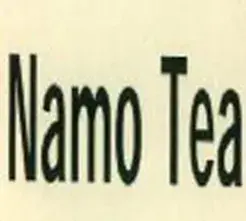 |
Tea Powder | Invalid (fee not paid) |
| 2693101 | VIKAS KUMAR JAIN | 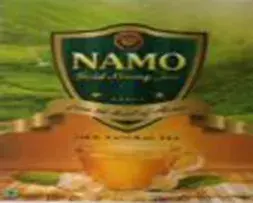 |
Tea | Invalid (fee not paid) |
| 2907675 | THOMAS CHERIYAN | 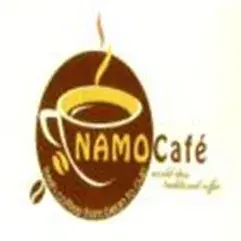 |
Coffee,Tea | Refused |
Also read The Prime Minister’s Brand rise of Trademark filing trend for NaMo related trademarks in India
Tragedy trademarks – some applications incorporate terms that are related to tragic events, these include terms such as 9/11, MH370, ‘Black lives matter’, ‘War on terror’ etc.
Also read Making a mark out of a Tragedy
| Application No | Applicant’s name | Trademark | Goods and services | Status |
| 85027877 | National September 11 Museum & Memorial at the World Trade Center Foundation Inc. | 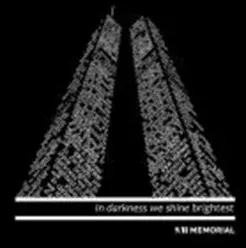 |
Jewelry | Abandoned |
| 90013831 | The Elizabeth Taylor AIDS Foundation non-profit corporation | 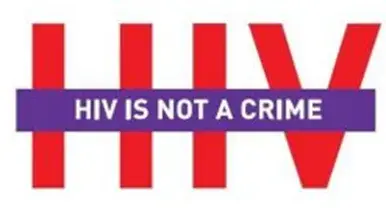 |
Promoting public awareness of issues related to victims of HIV | Registered |
| 78362525 | Spehn, Richard | 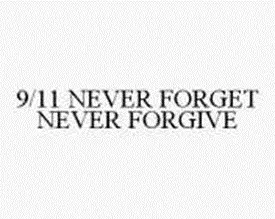 |
Clothing, namely, t-shirts, caps, shirts, and shorts | Abandoned |
Trademarks filed in the US related to Tragedies
| Terms included in Applications Related to Tragic Events | Total Applications
(until 12/31/2020) |
| 9/11 | 56 |
| War on Terror | 10 |
| Ebola | 15 |
| HIV/AIDS | 232/673 |
Source : USPTO’S Trademark Electronic Search System(TESS)
COVID-19 AND RELATED TRADEMARKS :
The Covid -19 pandemic led to filing of countless trademark applications including the terms “COVID,” “Coronavirus,” and other medical and pandemic-management related terms. Many companies tactically used COVID and Corona formative marks with an aim to convince the public that the product would be effective as protection against the virus. For example, an application for hand cleaners was made under the trademark ‘CORONA SAFE : Antivirus Spray with Vitamin E’[1] Trademark applications were filed by proprietors in different classes of products including cosmetics, clothing, soaps etc.
Approximately 300+ trademark applications have been filed with the Indian Trademark Registry since the onset of the global pandemic last year. Some of these terms are descriptive of the pandemic itself, while others are phrases that became trending during the pandemic through hashtags and posts on various social media platforms such as #staysafe #quarantine etc.. It is interesting to note that the first wave of COVID-19 was recorded during the last week of March 2020, while the earliest Covid related trademark applications were filed in India from February 2020 onwards itself.
| NO | Application | Application no. | Proprietor Name | Class | Date of Application |
| 1 | COViD-19 mask | 4490068 | ZAKIR KHAN
DELHI ,INDIA |
9 | 20/02/2020 |
GLOBAL FILING TRENDS
As per the WIPO Global Brand Database more than 1,125 trademark applications have been filed till date by companies around the world using the term ‘COVID’ in their trademark applications. Moreover 750+ filings have been made by companies around the world with the term ‘CORONA” in their trademark applications since January, 2020. One of the earliest applications using the term “covid” was filed in the USPTO- “together we survived covid-19” under class 25 on March 09, 2020 (Application #88827109)”
Also read
USAGE OF THE TERM ‘COVID’ IN TRADEMARK APPLICATIONS
| No. | Country | No. of applications |
| 1 | INDIA | 14 |
| 2 | EUROPE | 35 |
| 3 | USA | 628 |
| 4 | CANADA | 22 |
| 5 | GERMANY | 53 |
| 6 | SPAIN | 112 |
| 7 | FRANCE | 2 |
| 8 | KOREA | 48 |
| 9 | SINGAPORE | 2 |
| 10 | NEW ZEALAND | 10 |
| 11 | AUSTRALIA | 31 |
Source : WIPO Global Brand Database
[1]USE OF ‘COVID’ TRADEMARK GLOBALLY
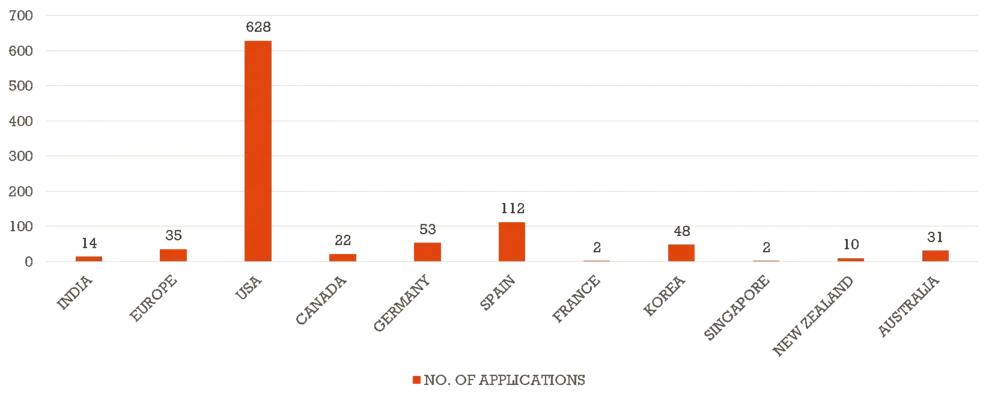
Source : WIPO Global Brand Database
COVID RELATED TRADEMARKS- DATA ANALYSIS

Source: Indian Trademark Registry Records as on June 30, 2021
TIMELINE OF COVID APPLICATIONS- INDIA
The below graph is a pictorial representation of timeline of filing of COVID related trademark applications in India until June 30, 2021. The graph reflects the behavioral response of companies towards the popularity of any term in use at a specific period or phase. The graph shows minimal filing during January and February, 2020 and then the filing is seen at peak during June, 2020 when the first wave of COVID-19 was also at its peak and people were hoarding and incessantly using products and goods to keep the virus away.
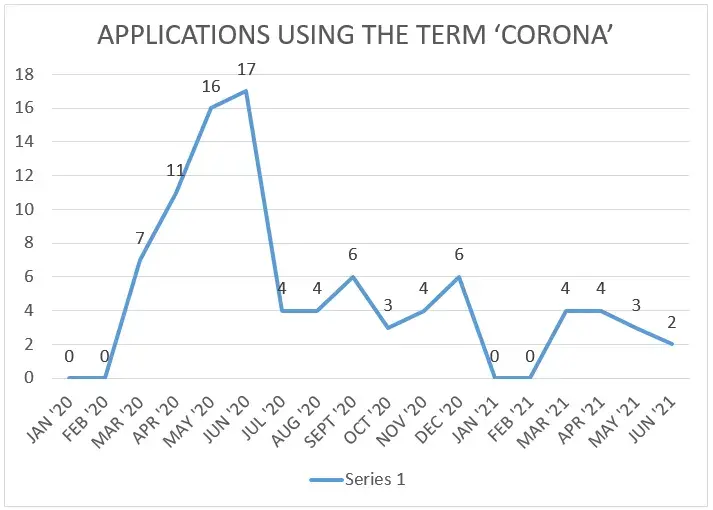
Source : Indian Trademark Registry as June 30, 2021
The earlier set of trademark applications related to ‘COVID’ & ‘Corona’ filed before the Indian Trade Mark Registry include:
| NO | Application | Application no. | Proprietor Name | Class | Date of Application |
| 1 | COViD-19 mask | 4490068 | ZAKIR KHAN
DELHI ,INDIA |
9 | 20/02/2020 |
| 2 | COVID-RELIEF | 4463463 | GLENSMITH LABS PRIVATELIMITED
Delhi, India |
5 | 05/03/2020 |
| 3 | Covidac | 4469815 | BHARAT BIOTECH INTERNATIONAL LIMITED
India |
5 | 12/03/2020 |
| 4 | Dhl CoronaVirusPreventive | 4466960 | DALMIA HEALTHCARELIMITED., New Delhi, India | 5 | 08/03/2020 |
| 5 | ANTI-CORONA | 4472575 | UNNATI ENTERPRISES,
UP, India |
5 | 14/03/2020 |
Anticipatory applications from November, 2020
Several major pharmaceutical firms also made anticipatory applications before WIPO for trademarks that may be used by them for vaccine marketing. For instance, the Serum Institute of India filed COVID related marks for vaccine under class 5 as early as November 20, 2020.
| SERUM INSTITUTE OF INDIA | |||
| S.no. | BRAND | APP. DATE | CLASS |
| 1 | COVI SHIELD | 2020-11-20 | 5 |
| 2 | SII COVAX | 2020-11-20 | 5 |
| 3 | COVI-VAC | 2020-11-20 | 5 |
| 4 | COVOVAX | 2020-11-20 | 5 |
| 5 | COVIVAXX | 2020-11-20 | 5 |
Similarly, pharmaceutical company, Bharat Biotech International Ltd. filed the mark COVIVAC for vaccine in class 5 as early as March 12, 2020.
| BHARAT BIOTECH INTERNATIONAL LTD | |||
| # | BRAND | APP. DATE | CLASS |
| 1 | COVIVAC | 2020-03-12 | 5 |
| 2 | CovFluvac | 2020-03-19 | 5 |
| 3 | Cofluvac | 2020-03-19 | 5 |
| 4 | Icowin | 2020-05-07 | 5 |
| 5 | Covisafe | 2020-05-15 | 5 |
| 6 | Covidaxin | 2020-05-15 | 5 |
| 7 | Covaxin | 2020-05-15 | 5 |
| 8 | CHIGNVAC | 2020-06-18 | 5 |
| 9 | CHGNVAC | 2020-06-18 | 5 |
| 10 | CHIGNVAX | 2020-06-18 | 5 |
| 11 | CHIGVAC | 2020-06-18 | 5 |
| 12 | COVIMIST | 2020-07-22 | 5 |
| 13 | COVAXIN | 2020-08-24 | 5 |
| 14 | INCOVAXIN | 2020-09-19 | 5 |
| 15 | NCOVAX | 2020-09-19 | 5 |
| 16 | NCOVAXIN | 2020-09-19 | 5 |
| 17 | NCOVACIN | 2020-09-19 | 5 |
| 18 | NCORVAC | 2020-09-19 | 5 |
| 19 | INCOVACIN | 2020-09-19 | 5 |
| 20 | NASO-COV | 2020-10-27 | 5 |
| 21 | NASOCOV | 2020-10-27 | 5 |
| 22 | NASCOVAC | 2020-12-31 | 5 |
| 23 | NASCOVAX | 2020-12-31 | 5 |
| 24 | COVAXIN | 2021-01-29 | 5 |
| 25 | INCOVACC | 2021-04-23 | 5 |
Possible obstacles while registering COVID related trademarks
Although many trademark applications have been filed under several classes since the outbreak of the pandemic in India and across the world, the registration of these applications seem unlikely in view of below mentioned grounds:
- Descriptive Mark One of the grounds under which medicinal or pharmaceutical products could be rejected could be that the mark is ‘descriptive’. Section 9 of the Trademarks Act, 1999 provides, ‘lack of distinctiveness’ as an absolute ground for refusal of registration. Considering that COVID-19 is a worldwide pandemic, if the sign consists solely of “coronavirus” and “COVID-19” (alone or combined with a descriptive term) covering medicines, medical equipment, and services, the IP Office may in all possibility consider the trademark devoid of distinctive character and refuse the application.
In China, the Trade Marks Office issued the Guidelines for the Examination of Epidemic Prevention and Control-Related Trademarks on February 27, 2020 while quoting Article 10 of the Chinese Trade Marks Law which states that signs which are ’ detrimental to socialist ethics or customs, or [have] other unwholesome influences’ cannot be registered. In accordance with these guidelines the Chinese Trade Marks Office had rejected around 300+ applications which contained terms relating to Covid-19 by mid-March.
- Likelihood of registration of Covid-19 Trademarks for unrelated goods and services
It is however, possible that trademark applications containing ‘COVID-19’ related terms for products that are not directly pandemic related may be accepted within the group of arbitrary trademarks. For example: The application for a board game called ‘Corona Yuga’ (Application no. 4491856 in class 28) might be accepted for its arbitrary usage.
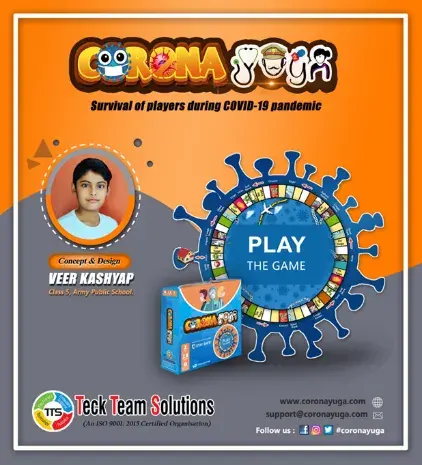
Also read Copycat Covid-19 Products- New Face of Counterfeit
COVID RELATED COMPANY NAMES
It is indeed interesting to see that even companies have registered their names with the MCA comprising of terms like Corona, Covid-19, Pandemic and even quarantine.
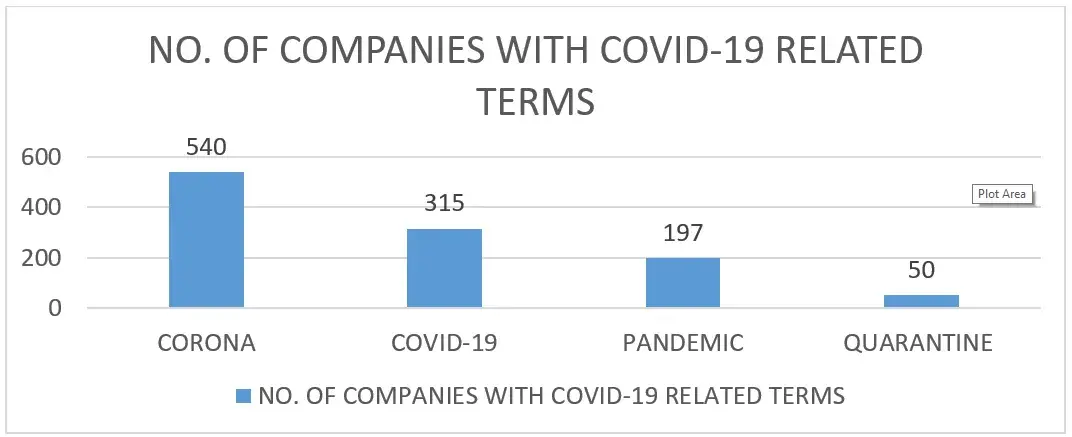
COVID RELATED DOMAIN NAMES
The COVID-19 pandemic saw a spike in the number of fraudulent domain name registrations and illegal websites, specifically after the announcement of large scale vaccination drives all around the world. These websites bait internet customers through the usage of common Covid-19 associated terms in their domain names.
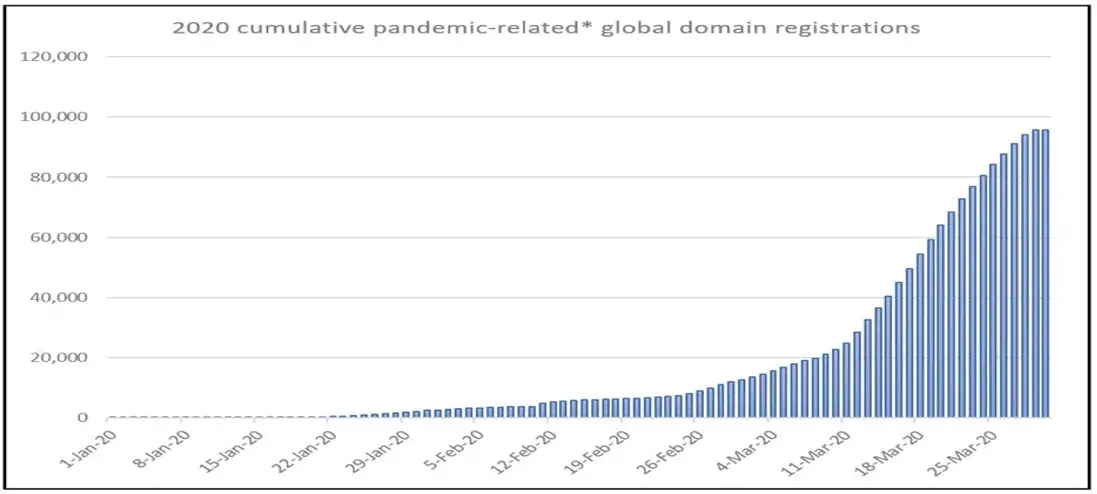
Figure 1. 2020 cumulative pandemic-related* global domain registrations. *Search terms: covid, corona, korona, kovid, pandemic, virus, wuhan. Exclusions: coronary, coronado. Source: MarkMonitor.
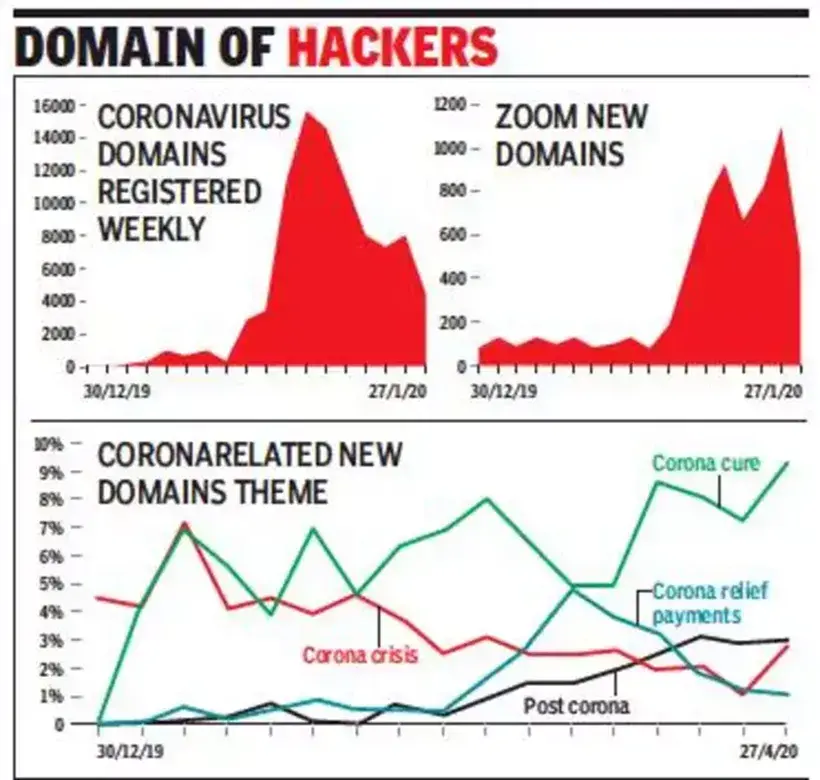
Also read TYPOSCAMS! PHISHING! TYPOSQUATTING in light of COVID-19 – Watch what you read!
CASES PERTAINING TO COVID-19 RELATED TRADEMARKS
Cutis Biotech v Serum Institute of India :
Recently, Cutis Biotech had filed a passing off suit with the High Court of Bombay against the Serum Institute for use of the mark ‘Covishield’ which the company had been using for vaccines manufactured by it.
Covered in detail click here to learn more.
The Trademark tussle in this case revolved around the trademark “COVISHIELD”, wherein both the Appellant and the Respondent had applied for registration of the impugned trademark and both the applications were pending registration.
Cutis, i.e. the Appellant had claimed that it had coined the term ‘Covishield’ for the production of pharmaceuticals earlier to the trademark application filed by the Serum Institute for the mark on June 06, 2020 vide Application No. 4522244 for vaccine under Class-5.
However, Serum Institute i.e. the Respondent contented that the use of the mark by it was genuine as the Union Health Minister had also made a statement on April 25, 2020 with respect to trials for coronavirus vaccine at Serum Institute and pursuant to it, Serum Institute received virus seed, and cell bank from Oxford University and permission was granted by DCGI and it was only after that i.e. on June 06, 2020, that the Respondent applied for registration of ‘Covishield’ trademark.
The Court after hearing both the parties, rejected the Cutis’ plea that Serum Institute had failed to sufficiently prove the existence of its goodwill with respect to its products bearing the ‘Covishield’ mark. The Appellant’s plea about likelihood of deception between both the marks and acquired goodwill and reputation also could not stand in front of the Court. The Court while elucidating on the contention of likelihood of deception between the marks was of the view that in the present case there was no likelihood of confusion between the products of both the parties as the vaccine ‘Covishield’ produced by Respondent was not available across the counter and would be administered through Government agencies only. Hence, the buyer of the product ‘Covishield’ of Respondent was the Government of India.
Furthermore, the Court while dismissing Cutis’ plea in the case made a noteworthy observation that the vaccine is a preventive medicine for COVID-19 and a step towards controlling the pandemic and that a restraint order that will prevent the Defendant from using the trademark ‘Covishield’and distributing this vaccine under the said trademark would bring great hardship to the people to identify the product of Defendant.
Hence, the Bombay High Court endeavoured to serve public interests while securing the IP rights of the right owner in the case.
Conclusion
Trademark, domain names, company names etc. are creative opportunities for enterprises to get public attention and gain popularity. Hence, one can observe many applications that attempt to take advantage of such sensational events. Applicants or owners who have tactically used COVID and Corona formative marks seek to financially exploit the impact of the pandemic. Although this practice seems harmless, it must be considered that baseless applications would not only deceive the public but also hurt possible legitimate users.
PIZZA WITH A SIDE OF DATA THEFT.

By Lucy Rana and Rima Majumdar
In this digital day and age, data and information may be considered as the newest form of wealth. Perhaps that is why there isn’t a shortage of criminal activity surrounding data theft and infringement of one’s privacy!
One such interesting case in the context of data theft was the Criminal Writ filed by Jubilant Food Works Limited (“Jubilant”) before the Delhi High Court. Jubilant operates the famous Dominos Pizza outlets in India. In the case titled Jubilant Food Works Limited vs. Union Of India, the Petitioner filed the writ petition seeking a Writ of Mandamus directing the Ministry of Electronics and Information Technology and the Department of Communications, Ministry of Communications to direct and notify intermediaries such as telecom service providers, internet service providers, search engines, etc. to immediately remove or disable access to the uniform resource locator(s) (URLs) created by one or more unknown persons/hackers to illegally share the data of thousands of customers of the petitioner on the internet.
BRIEF FACTS OF THE CASE
It is the case of the Petitioner that certain unknown hackers have illegally accessed its confidential user/customer data, and have hosted it on the URLs without consent, thus invading the privacy of the Petitioner’s customers and committing the offence of data theft.
The Petitioner further claimed that the hackers had also attempted to intimidate and extort a ransom from the Petitioner, and that such an action is an offence under Section 43sub-clause (a) ‘access data without permission’ and Section 43 sub-clause (b) ‘download, copy or extract data without permission’ as well as Section 66 which provides for computer related offences under the Information Technology Act, 2000. Furthermore, these said offences are also criminally punishable under sections 384/506/34 of the India Penal Code (IPC).
ARGUMENTS ON BEHALF OF THE PETITIONER
The Petitioner argued that the Ministry of Electronics and Information Technology / MeitY (Respondent no. 1) and the Department of Communications (Respondent no. 2) being the appropriate government authority under the IT Act for internet based communication, are duty-bound to immediately notify the intermediaries and issue directions to remove or disable access to the URLs, as part of their statutory obligation under section 79 (3)(b) of the IT Act read with Rule 3 (1) (d) of the 2021 Rules.
That in view of the judgment passed by the Delhi High Court in the case titled as X vs Union of India in W.P. (Crl) 1082/2020 decided on 20 April 2021, Petitioner was also seeking issuance of directions to the DCP Cyber Crime Cell and the SHO, Cyber Crimes Cell, South East District – Delhi, Police Station – Chittaranjan Park (Respondent No. 3), to take steps to:
(a) immediately remove/disable access to the impugned URLs; and
(b) obtain all information and associated records, including all unique identifiers relating to the URLs, from the concerned intermediaries, under Rule 3 (1) (j) of the 2021 Rules, for the purposes of prevention, detection, investigation and prosecution of offences committed by the hackers under the IT Act.
That due to the inaction of the Respondents, the hackers merrily continue to re-post, re-direct and re-publish the sensitive data of the Petitioner’s customers from one URL to another, thereby resulting in a severe breach/compromise of personal data of thousands of Petitioner’s customers.
The Petitioner also became aware that the hackers had posted an advertisement on one of the URLs with an offer to sell the illegally obtained data of the Petitioner’s customers. Therefore, if the URLs are not immediately removed or disabled, the hackers would continue to further compromise the data of the Petitioner’s customers on the internet, thus invading their privacy.
DIRECTIONS PASSED BY THE COURT
In cases such as the present one, a dynamic injunction has been an appropriate way of tackling the issue of digital piracy in India. To explain it, take the example of the arcade game Whac-a-Mole, where the player is given a hammer and asked to hit the toy moles which appear at random, and send them back into their holes. This is exactly how infringers operating websites with fraudulent or pirated content function; the moment one website is disabled, another takes its place. Since it is not possible for the aggrieved person to approach the court with a new suit, each time a mirror website pops up, dynamic injunctions allow the Plaintiff to cover these mirror websites without obtaining a fresh injunction order.
Presently, in several cases concerning digital piracy or online scams and data theft, the Department of Telecommunications (DoT) and the Ministry of Electronic and Information Technology (MeitY) have been made parties, with the relief sought from them being limited to blocking access to the rogue websites, as and when the Plaintiff becomes aware of the same and provides the information regarding the same to these Government bodies.
In the Jubilant Foods case as well, the counsel for the Union of India (representing the DoT and MeitY) made a submission to the Hon’ble Court that the URLs supplied to them have already been blocked and they shall continue to take proactive steps as and when the complaints shall be filed by the Petitioner before them.
Finally, the Petitioner was granted liberty to make written communication to the investigating officer for removal/access disablement of the same or similar offending content appearing, including URLs on any other website/online platform or search engine(s), whether in the same or in a different context; and the investigating officer is to notify such website/online platform or search engine(s) to comply with such request, immediately and in any event within 72 hours of receiving such written communication from the Petitioner.
With these observations, the Single Bench comprising of Justice Yogesh Khanna disposed of the petition.
Related Posts
Protection of Personal Information & Sensitive personal data or information in India
Player’s Control over Sports Performance Data
DATA-PRIVACY PROTECTION AMIDST COVID-19 – RECENT UPDATES FOR THE EMPLOYMENT SECTOR
MASIMO ACCUSES APPLE WATCH OF PATENT INFRINGEMENT.

By Sukku and Johny Solomon Raj
Masimo, a California-based medical technology company, has recently filed a complaint before the United States International Trade Commission, inter alia stating that the Apple Watch Series 6 uses medical technology that infringes five of its patents. The application was filed under Section 337 of the Tariff Act, under which the Commission shall investigate any unlawful act under the provision. “The importation into the United States, the sale for importation of articles that infringe a valid and enforceable United States patent or a valid and enforceable United States copyright registered” have been rendered illegal under the said section.
As regards the type of patent allegedly infringed, Masimo claims that Apple infringed its Patent by using technology used for monitoring Oxygen Levels for its smartwatches. The said patented technology is purportedly the core business of Masimo. The patents in this dispute are used by devices that measure blood oxygen levels by transmitting light through the user’s body. The complaint also includes an application by the medical-sensor company to ban all imports of Apple Watches into the US. It alleges that although Apple markets its new series of watches as medical devices, the fine print states that the blood oxygen level readings made by the watch should not be relied upon for medical purposes.
Smart Watches and Health Monitoring Features
One of the main selling points of most smart watches these days is features for monitoring health and fitness of the users. Other than Apple Watch Series 6, the Samsung Galaxy Watch 3, the Noise ColorFit Pro 3, the Realme Watch S etc. have applications that provide blood oxygen measurements. Some of these watches use built-in oximeters while others analyze the chemical makeup of one’s sweat. The dispute between Apple and Masimo is based on Apple’s alleged usage of light to sensor blood oxygen levels, which Masimo claims is their patented technology. However, interestingly, technically ‘light’ is used for measuring blood-oxygen by other companies also, including but not limited to Huawei (as is suggested by the red-light which is used for measuring).
Masimo’s trade secret allegations against Apple
This is not the first time that a dispute has arisen between these two companies. In January 2020, Masimo had filed case regarding trade secrets against Apple, inter alia alleging that the tech company had promised a working relationship through which it gained access to confidential information and hired key employees. Apple had filed requests to dismiss the case and had also lodged petitions before the USPTO to invalidate the related patent held by Masimo.
| Patent No. | Title | Abstract | PTAB
No. |
| 10376191 | Multi-stream data collection system for noninvasive measurement of blood constituents | The present disclosure relates to noninvasive methods, devices, and systems for measuring various blood constituents or analytes, such as glucose. In an embodiment, a light source comprises LEDs and super-luminescent LEDs. The light source emits light at at least wavelengths of about 1610 nm, about 1640 nm, and about 1665 nm. In an embodiment, the detector comprises a plurality of photodetectors arranged in a special geometry comprising one of a substantially linear substantially equal spaced geometry, a substantially linear substantially non-equal spaced geometry, and a substantially grid geometry.
|
IPR20 to around USD 30.6billion. It has been predicted that a legal settlement between the two companies would force Apple to pay somewhere between USD 50 million to USD 300 million, as royalties to Masimo. |
References:
- https://www.indiatoday.in/technology/news/story/apple-watch-faces-potential-ban-in-the-us-for-alleged-patent-infringement-1823224-2021-07-02
- https://www.bloombergquint.com/business/apple-accused-of-delaying-masimo-legal-fight-to-gain-watch-sales
- https://timesofindia.indiatimes.com/gadgets-news/why-this-medical-tech-company-wants-the-apple-watch-banned/articleshow/84008324.cms
- https://news.bloomberglaw.com/pharma-and-life-sciences/apple-watch-should-be-blocked-from-import-to-u-s-masimo-claims
- https://portal.unifiedpatents.com/ptab/case/IPR2021-00209

